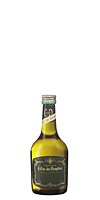It's a blog blog world
I know it's not news that the New York Times is now syndicating the biggest wine blog in the blogosphere, The Pour by Eric Asimov. Only five posts into Mr. Asimov's new gig and some 250 reader comments have already been recorded.
To me, the news generated by The Pour is that the Times has a new-found awareness of the blog. Their new wine blog is friendly and fun, in contrast to their foray into food blogs six weeks ago, which was not exactly true to the basic blogger ideals.
Personally, I find there's nothing worse than following along on a blog, finally entering that first well-meaning comment, and then seeing your comment removed during moderation. I got that experience from the Times' other blog on the "Dining & Wine" pages. On that blog, readers' comments are edited (read: cut) more than they are moderated (read: monitored).
NEW JOURNALISM FOR NYT
I don't see that same heavy hand at work on The Pour. If Mr. Asimov is managing all the moderation and comment responses himself, then he definitely has a deft touch. If a team of moderators are required -- and with 118 published comments on the initial post you kind of think they would be -- then it's a team that chooses not to rule like a ruthless desk editor.
It seems the idea that a blog is more than just a web log is coming into focus at Times. After all, it's an online discourse too: A forum for its author but also for that author's readership. (When you ignore this last point, the Pour blog would really be no different than the online version of Mr. Asimov's weekly column, also called The Pour.)
And while I still may not consider this new practice over on the NYT site a proper wine blog (exactly who is moderating all those comments?), it certainly is a welcome addition to the Internet wine community.























